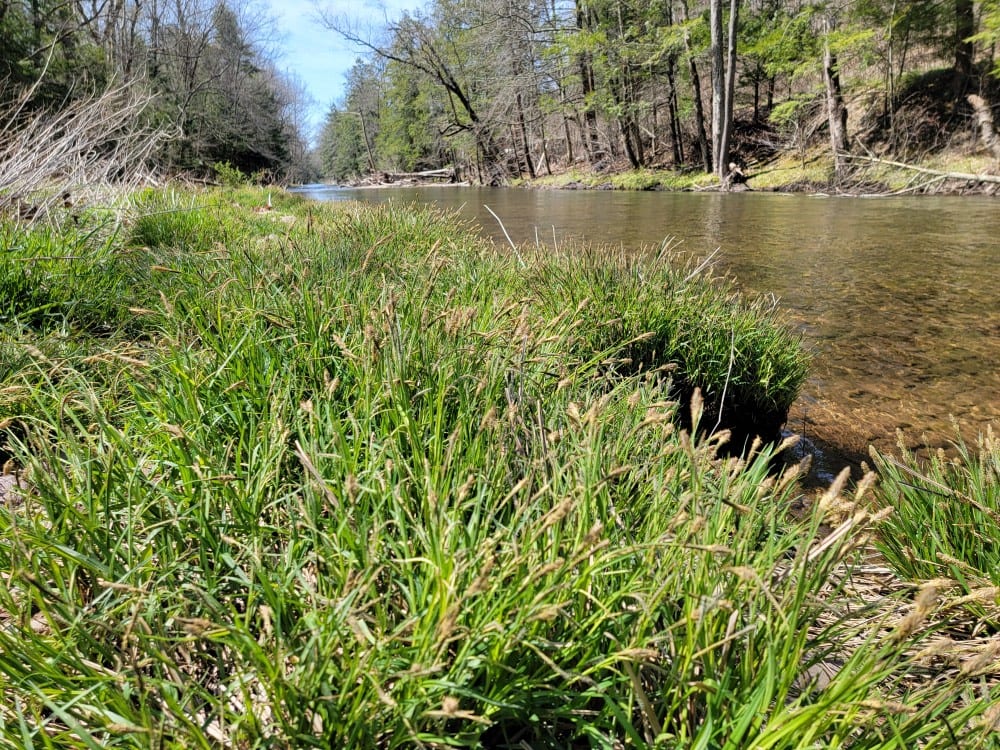By Sara Schlesinger
April showers truly bring May Flowers! While visiting easements in Columbia and Lycoming Counties this past week, I spotted several native wildflowers in bloom.
Wood Anemone (Anemone quinquefloia) is a perennial flower in the buttercup family with 5 white petals and a distinctive musky smell. Being that they are one of the earliest blooming flowers in our region, wood anemones are a great source of nectar for early pollinators.
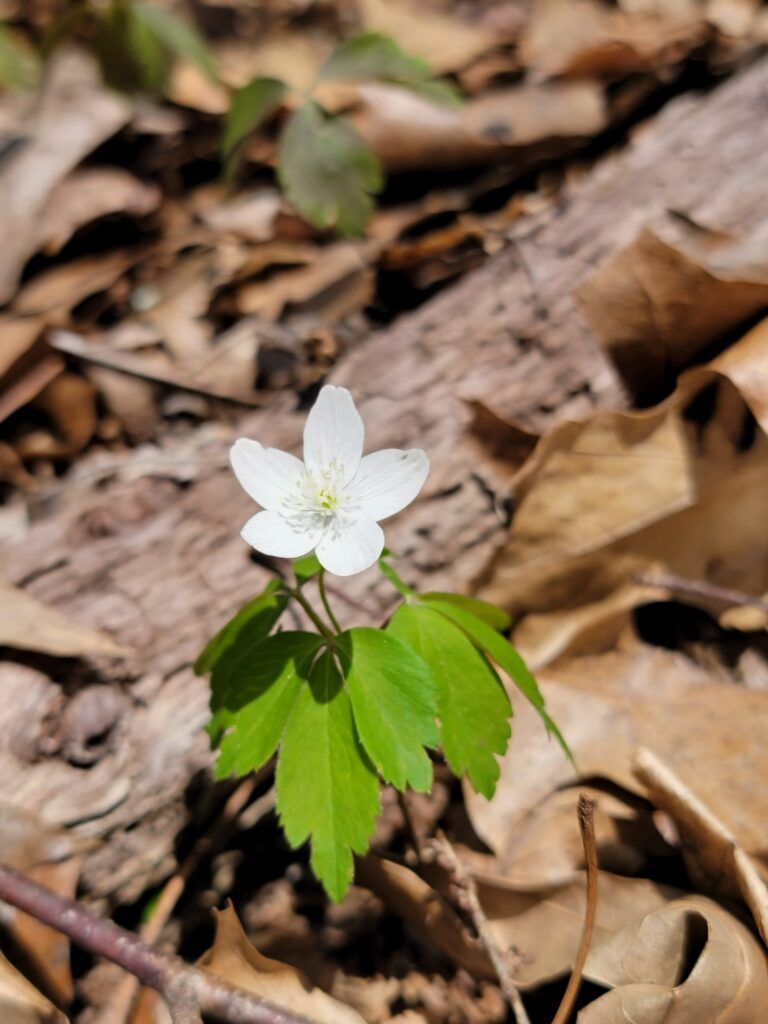
Mayapples (Podophyllum peltatum) have large umbrella-likes leaves that grow to approximately 18” tall and up to 12” across, developing a single white flower. Typically found in damp, open woods, mayapples use rhizomes to colonize the forest floor, creating dense mats. Mayapples are currently unfurling their leaves and will begin to blossom later this month.
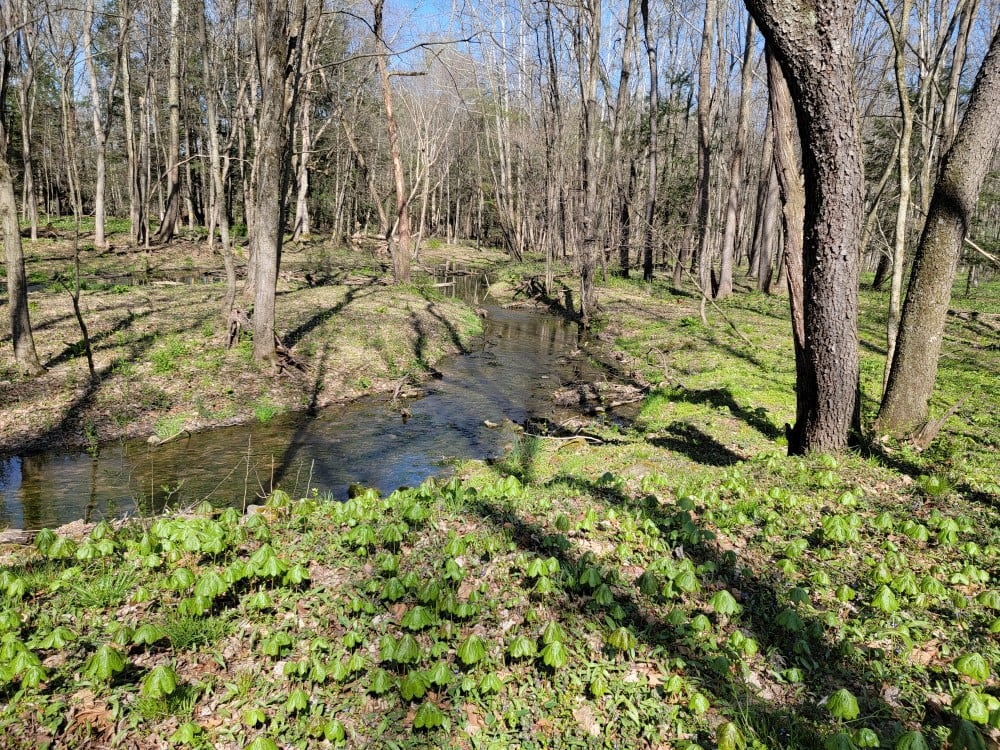
Dutchman’s Breeches (Dicentra cucullaria) resemble a pair of pantaloons hanging upside-down on a clothes-line, with yellow around ‘the waist.’ They may be confused with Bleeding Hearts and Squirrel Corn, however these 2 have a more ‘heart-shaped’ flower, and lack the yellow coloring at the end of the spurs. The finely compound leaves of Dutchman’s Breeches resemble ferns. Refrain from collecting Dutchman’s Breeches, as their flowers wilt almost immediately upon being picked.
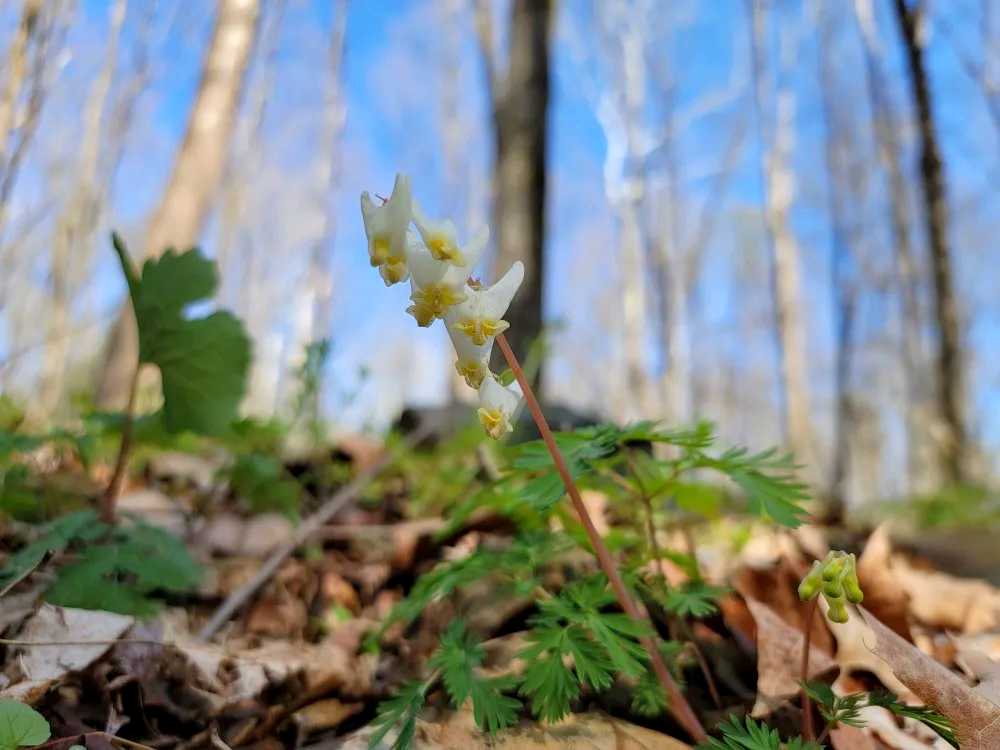
Blue Cohosh (Caulophyllum thalictroides) is a perennial woodland species that thrives in shady areas with moist soil. They display clusters of dainty yellowish-green flowers, once the flowers have fallen, vivid-blue berries take their place.
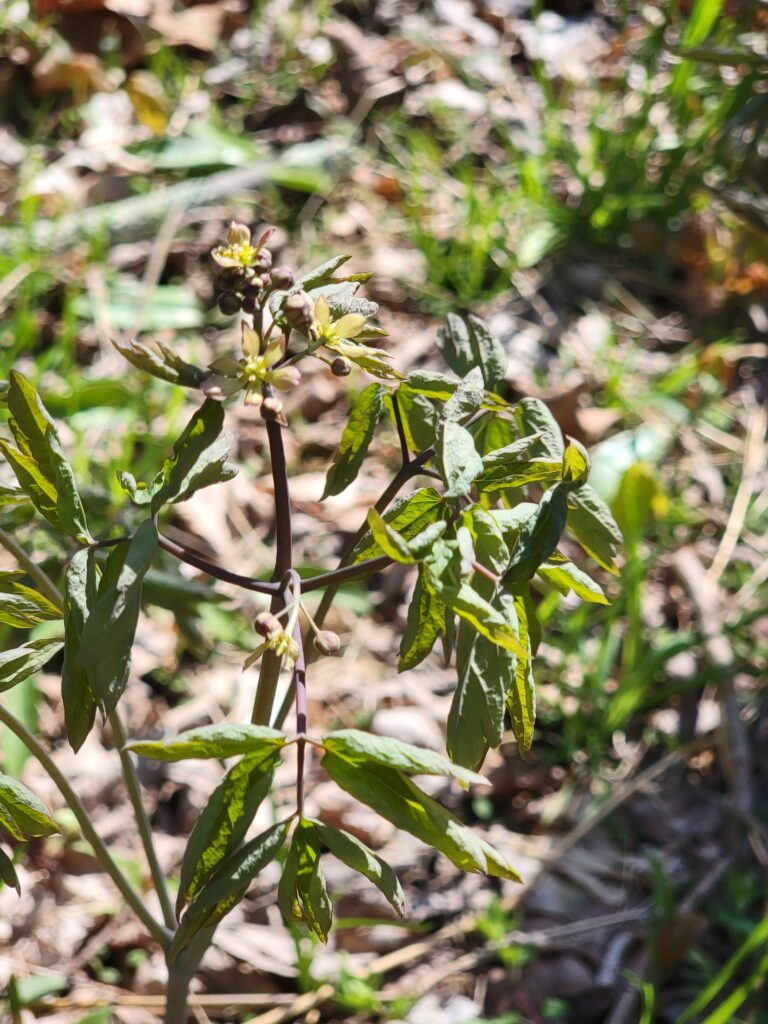
Yellow Trout Lilies (Erythronium americanum) have a pair of brownish mottled leaves that resemble the markings of a brook trout, with a single yellow lily-shaped flower. It takes several years from germination for the plant to reach maturity and develop a flower, younger plants with only one leaf will not flower. Yellow Trout Lilies are found in areas with rich, moist soil that receive ample sunlight in early spring.
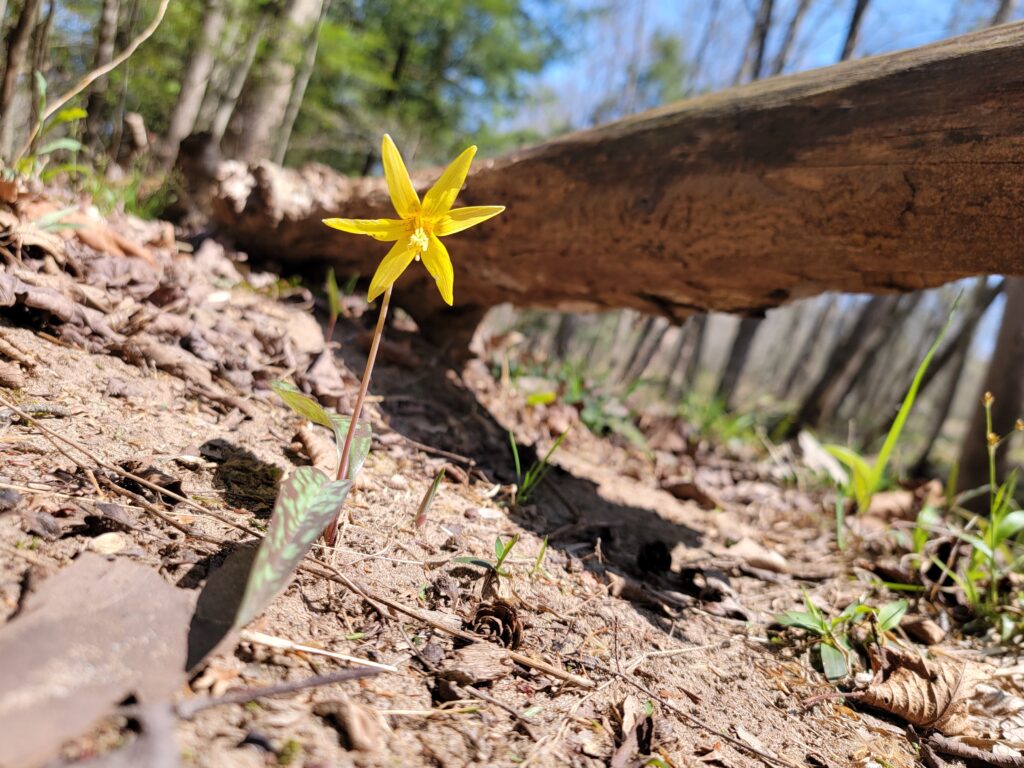
Tussock Sedge (Carex stricta) is a vigorous wetland plant that forms mounded clumps and grows to approximately 3’ tall. The large, dense root system, and its resiliency to deer browsing make the Tussocks Sedge an excellent choice for erosion control!
